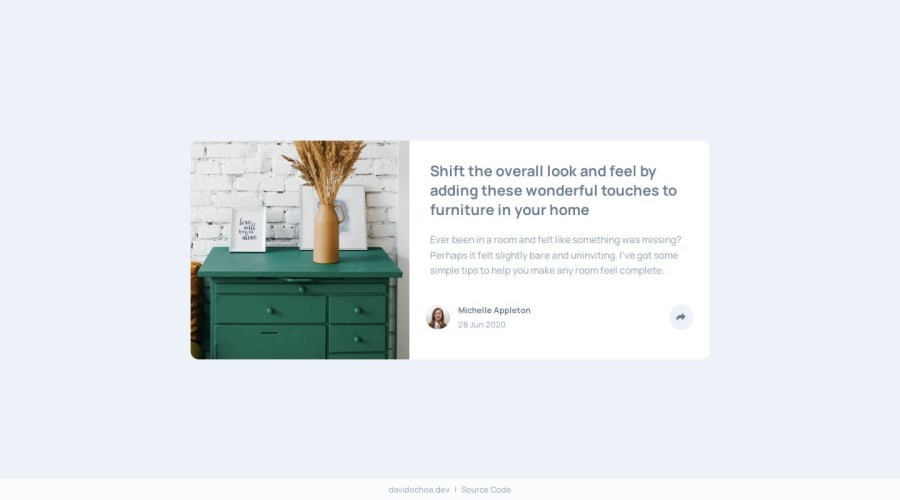
Submitted over 1 year ago
Article Preview Component | HTML5, CSS3, JavaScript & Flexbox
@davidochoadev
Design comparison
SolutionDesign
Solution retrospective
Hi, everyone! 👋
I'm David and this is my solution for this challenge.
✏️ Created with:
- HTML5 🌐
- CSS3 🎨
- JavaScript 🚀
- Flexbox 🧩
- Media Queries 🖥
- Mobile-First Workflow 📱
📝 What have i tried to implement in this project?
- Commented and explained code
- Well-Structured HTML5 markup, following best practices for accessibility.
- Utilized CSS3 for visually appealing styles
- Structured CSS into separate files for better organization and maintainability
- Implemented JavaScript to create share content pop-up
- Incorporated flexbox layout to create a flexible and responsive design, accommodating different screen sizes.
- Utilized media queries to adapt the design to various devices, ensuring a seamless experience.
- Followed a mobile-first workflow, prioritizing the development of a responsive design for mobile devices.
Any suggestions and help on how I can improve and reduce unnecessary code are welcome!
Best regards,
David Ochoa. 😼
Community feedback
Please log in to post a comment
Log in with GitHubJoin our Discord community
Join thousands of Frontend Mentor community members taking the challenges, sharing resources, helping each other, and chatting about all things front-end!
Join our Discord
